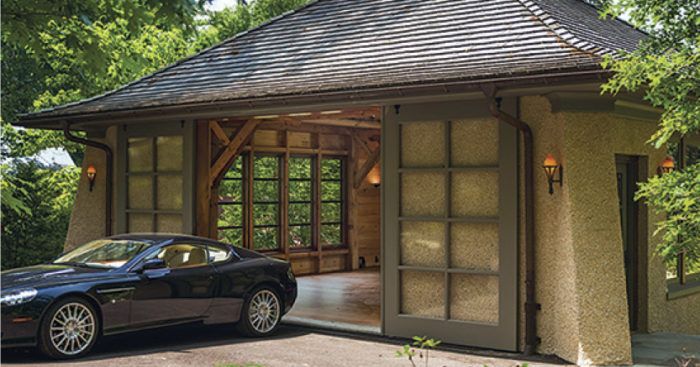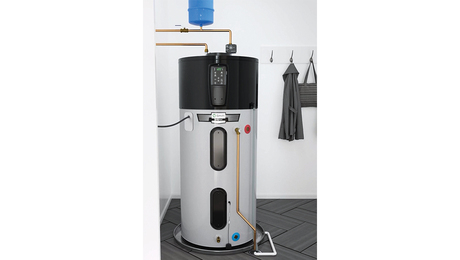Arts & Crafts and Automobiles
This elegant garage, inspired by the English Arts & Crafts movement, uses a hybrid system of trusses connected by steel plates and bolts along with support beams using mortise-and-tenon joinery.

Located in a suburb of Philadelphia, this elegant garage was designed by architect Peter Archer. His concept for the overall building came from an appreciation of the English Arts & Crafts movement, but he found inspiration for the timber-frame configuration on a visit to the Liberty of London department store. Archer developed the model for the garage — a hybrid system of trusses connected by steel plates and bolts along with support beams using mortise-and-tenon joinery — and he executed the concept with assistance from timber framer Hugh Lofting. The beams are Douglas fir from the Pacific Northwest, and the interior walls are finished in northeastern white pine. Doors and windows in each wall allow an abundance of natural light to enter the space. At 30-ft. by 30-ft., with a 24-ft. ceiling height from the stained and sealed southern-yellow-pine floor deck to the apex of the clerestory, this inviting space is also used as the location for warm-weather dinner and dance parties.


























View Comments
Exploring the intersection of arts and crafts with automobiles can ignite creativity in both fields. Artists can transform vehicles into canvases, showcasing unique designs and personalization through custom paint jobs and accessories. Meanwhile, automobile design benefits from artistic innovations in materials and forms. Collaborations between craftsmen and engineers can lead to more sustainable practices, combining aesthetics with functionality. This synergy not only enhances car culture but also inspires future generations of creators in both domains.